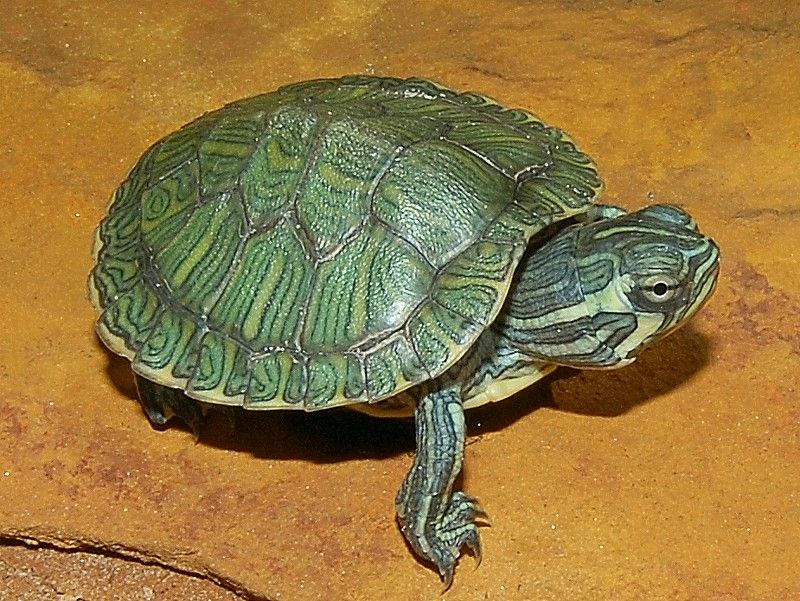A popular choice among turtle enthusiasts, the Cumberland Slider Turtle (Trachemys scripta troostii) is known for its vibrant coloration and engaging behavior. Native to the southeastern United States, these turtles thrive in freshwater environments and can make interesting and interactive pets. However, before bringing one home, it’s essential to understand how big Cumberland Slider Turtles can grow and how to provide them with adequate care and space.
Growth Rate and Size
Like many turtle species, the growth rate and size of Cumberland Slider Turtles can vary depending on factors such as diet, habitat, and overall health. On average, male Cumberland Sliders tend to reach a smaller size compared to females. Mature males typically measure between 6 to 8 inches (15 to 20 cm) in shell length.
Females, on the other hand, can grow significantly larger, with some individuals reaching a shell length of up to 12 inches (30 cm) or even more. The size difference between males and females is most noticeable when they are fully grown.
| Age | Male Size (Shell Length) | Female Size (Shell Length) |
|---|---|---|
| 1-2 years | 2-3 inches (5-7.5 cm) | 3-4 inches (7.5-10 cm) |
| 3-5 years | 4-6 inches (10-15 cm) | 6-8 inches (15-20 cm) |
| 5+ years | 6-8 inches (15-20 cm) | 8-12+ inches (20-30+ cm) |
It’s important to note that these size ranges are approximations, and individual turtles may vary. Proper nutrition, a suitable habitat, and regular veterinary care can help ensure healthy growth and development for Cumberland Slider Turtles.
Providing Adequate Space
As Cumberland Slider Turtles grow, they will require an adequate amount of space to thrive. A small tank or enclosure may be suitable for hatchlings and younger turtles, but as they mature, a more substantial habitat will be necessary.
As a general guideline, it is recommended to provide at least 10 gallons of water for every inch of shell length. This means that an adult female Cumberland Slider Turtle, measuring 12 inches in shell length, should have a minimum tank size of 120 gallons (454 liters).
When setting up the habitat, be sure to include a basking area for the turtles to rest and dry off. This can consist of a floating dock or platform with a heat lamp to provide the necessary warmth. A UVB light source should also be provided to ensure proper calcium absorption and overall health.

Credit: en.wikipedia.org
.jpg)
Credit: www.virginiaherpetologicalsociety.com
Caring for Cumberland Slider Turtles
Proper care is essential for the health and well-being of Cumberland Slider Turtles. Here are a few key care tips to keep in mind:
- Diet: Cumberland Sliders are omnivorous, meaning they eat both plant matter and animal protein. A balanced diet should include a variety of commercial turtle pellets, fresh leafy greens, vegetables, and occasional live or frozen prey such as insects or small fish.
- Water Quality: Regular maintenance of the tank or enclosure is crucial to maintain optimal water quality. Turtles produce waste that can quickly pollute the water, so a good filtration system and regular water changes are necessary.
- Basking area: Providing a basking area with appropriate heat and light sources is vital for the turtles’ thermoregulation and overall health. The basking spot should have a temperature of around 85-90°F (29-32°C).
- Veterinary Care: Regular check-ups with a reptile veterinarian can help detect any potential health issues early on. A turtle’s beak and nails may also require occasional trimming to prevent overgrowth.
By providing a suitable habitat with ample space, a balanced diet, and proper care, Cumberland Slider Turtles can live a long and healthy life. Remember, though, that keeping a turtle as a pet is a long-term commitment and requires dedication and responsibility.
Always research and consult with experts in turtle care to ensure you are providing the best possible environment and meeting all the needs of your Cumberland Slider Turtle.






Leave a Reply